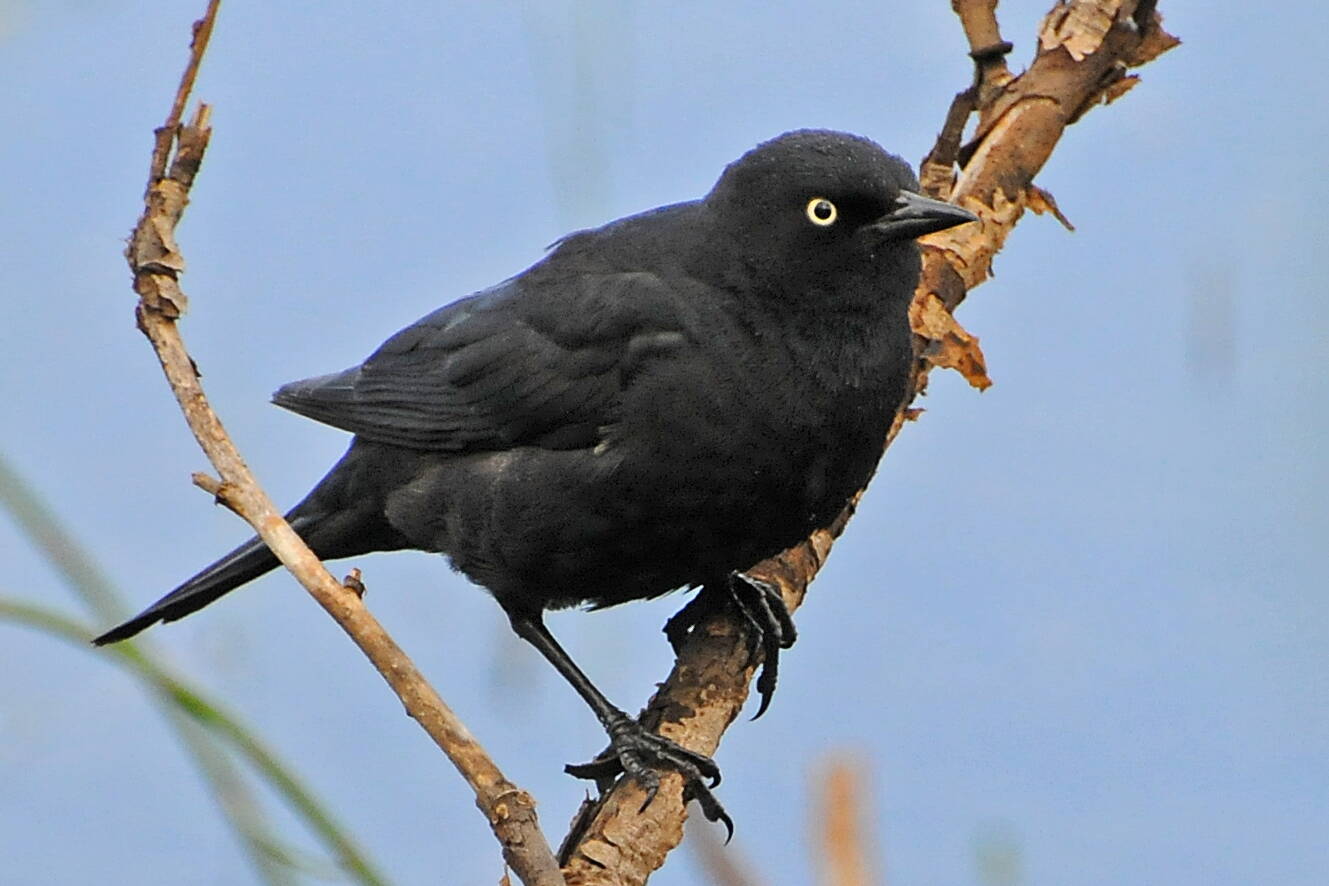Every late afternoon, a bunch of mallards is in the habit of coming to snack on fallen birdseed that accumulates on my ice-covered pond. And sometimes a few of them check out the seed deposit at other times. Late one morning, I looked out of the front window and saw a juvenile goshawk trying to catch a female mallard who had wandered up the creek on her way to the seed deposit. She was in the open water just below the little dam that makes the pond. When the goshawk attacked, she dove, only to be attacked again when she came up for air. After about six tries, the goshawk finally grabbed her, hauled her up onto the snowy bank on the far side of the pond, and stood on her for several minutes. Eventually she died, but I couldn’t determine the proximate cause of death (suffocation, a puncture wound, or ??).
Then the hungry predator began to feed, first eating the big flight muscles, and its crop began to bulge. This was followed by a rest period, with the hawk standing on the carcass — until an observant raven flew over. Then the hawk went quickly into the posture called mantling — body lowered, wing wide-spread, covering most of the prey (but not the orange feet). The hawk mantled a few more times, reacting to perceived threats I couldn’t see.
Next to be consumed were the guts, and the hawk’s crop bulged still more. Then there was another rest period with occasional mantling. As the hawk stood on the carcass, a little group of mallards came upstream, headed for the ice and fallen seeds. When they came even with the hawk’s position on the bank, they noticed it — and quite calmly turned around and went back downstream. Then the voracious predator pulled the flesh from the drumsticks and the shoulder area. Now its crop bulged so much that its breast feathers were partially erected.
All of that activity took something over four hours. I was briefly called away from my observation window, and when I returned, I saw that the no-longer-hungry hawk had gone, taking the remaining bones and feathers away.
Well after the hawk had departed, a raven came in very circumspectly, sneaking in from the trees behind where the hawk had stood. Alas for the raven, all it could find was one small morsel that the hawk had tossed aside.
On a more peaceful note: One semi-sunny morning toward the end of March, I went with a friend to Kingfisher Pond, that little gem of good habitat surrounded by a big industrial area, a trailer court, and a big office building. I hadn’t been there for quite a while and it was overdue for a visit. We found rather a wintry pond, largely covered with ice. Two over-wintering magpies were flying around, soon to be headed for nesting grounds in the Interior.
But things were happening. A dozen or so mallards foraged in a marshy area at one end of the pond and a pair shyly sought cover in the big industrial pond nearby. A song sparrow was tuning up, not quite in full voice. Two otters slithered from the pond over a little berm into the bigger pond. Best of all, a male red-winged blackbird, perched high in a tree, sang to let the world know he was there. A successful visit!
On a sunny afternoon in late March I stopped at the Nancy Street Wetlands Park. A friend had given me a tip that rusty blackbirds were there, so I went to look. Yes, I saw two of them, almost in good black breeding dress. They like to nest in forested edges of bogs and we often see them in early spring, before they settle down. They breed across the continent in northern forested areas, including northern Southeast.
Another short visit went over the deep mussel beds that nearly cover the tombolo that ties Shaman Island to the mainland. Just above the upper beach are some flat areas covered with mosses where a flock of robins had been probing, digging, and ripping, doing their own version of rototilling. It’s something they often do, and I wonder what they find there. The vigorous dogwood shrub at the edge of the trees sported brilliant red twigs but no leaves yet. The newly-resident song sparrow perched just above the shrub and sang — but only the first part of his song. Hastening back to the mainland, to beat the incoming tide, we heard several sapsuckers drumming in the forest. As we crossed the beach, a queen bumblebee whizzed past us, but she’ll find no flowers yet in bloom.
• Mary F. Willson is a retired professor of ecology. “On the Trails” appears every Wednesday in the Juneau Empire.

